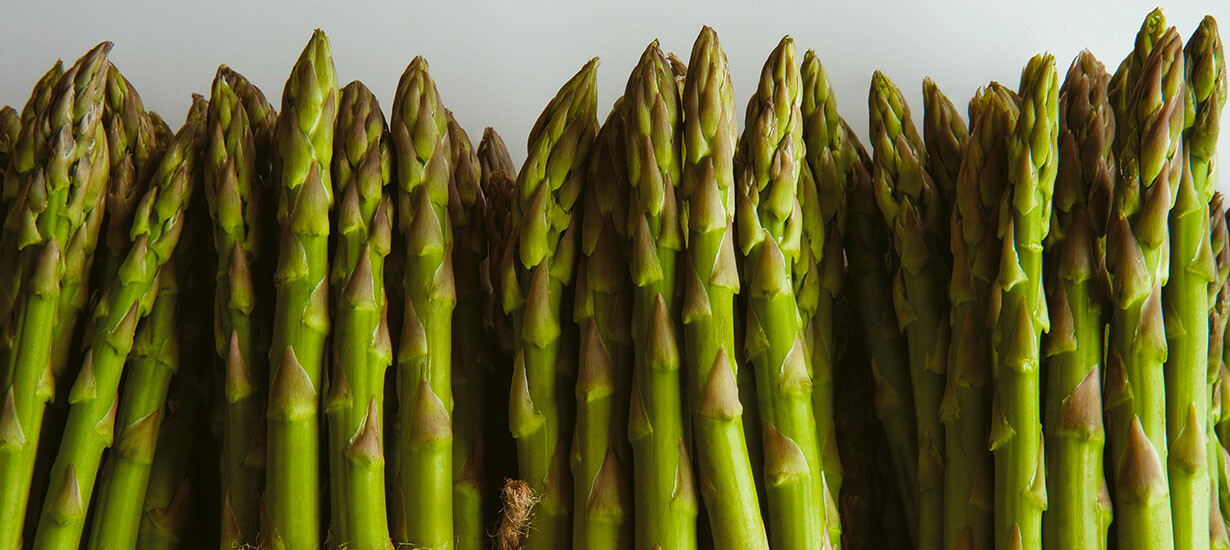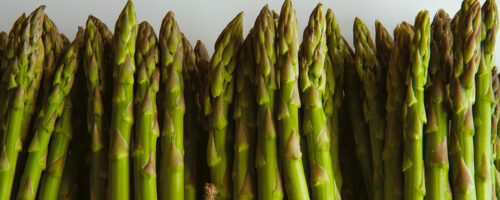
Fundo la Catalina, R8MQ+VP5, Pueblo Nuevo 11220, Peru
How is it produced?
Peru’s Ica Valley, an arid desert region with minimal rainfall, has become one of the world’s top asparagus-producing hubs. This success is due not to natural abundance, but to highly engineered, export-oriented agriculture. Farms like Agrokasa use drip irrigation, fertigation, and laser-leveled fields to maximize productivity. Water is drawn from overexploited underground aquifers to grow this water-intensive crop, which requires over 1,000 liters per kilogram.
Asparagus is harvested by hand at dawn to preserve freshness, chilled immediately, and packaged for international markets. While farms may hold certifications like GlobalGAP or Fair Trade, these labels often mask underlying issues: seasonal laborers with insecure contracts and few legal protections.
Describe the supply chain to the store shelf in Canada:
After harvest, most Peruvian asparagus is air-shipped to preserve freshness. It lands at ports like Vancouver and Montreal before entering Canada’s domestic distribution system. Though Peru exports 75% of its asparagus, the actual Canadian supply chain is tightly controlled. According to recent data, only two importers, Bains Wholesale Foods Ltd. and MS Balaji Trading Inc. , handled recorded imports between March 2023 and February 2024. These importers supply major grocery chains like Loblaws, Costco, and Walmart, helping to sustain Canada’s year-round asparagus supply.
In 2022 alone, British Columbia imported over 49,000 kilograms of asparagus from Peru. This reflects not only trade volume but also how Canadian food access is deeply embedded in global agricultural circuits, driven by just-in-time logistics and concentrated corporate control.
What is the power balance between the producer and seller?
The Canada–Peru Free Trade Agreement (CPFTA) eliminated tariffs on Peruvian asparagus, strengthening export flows—but without binding protections for labor or sustainability. In theory, free trade encourages efficiency; in practice, it consolidates power. Canadian importers and retailers dominate the value chain, while producers absorb risk and cost. Asparagus is what CEPAL’s Tradecan Matrix labels a “rising star”—a competitive export that gains global market share. But according to the Foreign Trade Competitiveness Index, Peru’s strength is based not on domestic innovation, but on low-cost labor and external dependency.
Producers in Ica are locked into a model where market access is conditional on meeting external standards, without leverage to demand fairer pricing. Farmworkers remain at the bottom of this hierarchy. Certifications may appeal to consumers, but without structural change, they do little to shift who benefits from the global food system.
Can you recommend changes to the system to improve the balance?
• Renegotiate agreements like the CPFTA to include enforceable labor and environmental clauses
• Apply trade competitiveness tools like the Tradecan Matrix to build domestic value-added industries
• Pass mandatory due diligence legislation in Canada requiring ethical sourcing practices
• Expand direct trade and cooperative farming models to empower producers
• Raise consumer awareness about how food access in the Global North relies on resource and labor extraction from the Global South
References/Resources:
Agrokasa. (2023). Asparagus product profile. https://agrokasa.com/en/producto/esparrago
Asparagus World. (2023). Peru exports about 75% of its fresh green asparagus. https://www.asparagusworld.com/news/peru-exports-about-75-of-its-fresh-green-asparagus/
Bullock, J. (2015). Peru asparagus: Export-led development and its consequences. Freeman Spogli Institute for International Studies, Stanford University. https://fsi-live.s3.us-west-1.amazonaws.com/s3fs-public/peru_asparagus.pdf
Canada Food Flows. (2023). Data portal. https://canadafoodflows.ca/DataPortal/
CEPAL/ECLAC. (2023). Foreign trade competitiveness matrix: Tradecan and FTCI report. https://repositorio.cepal.org/server/api/core/bitstreams/726bf4dc-0d4e-4b9d-8724-ddaaddadb11f/content
Econatur. (2023). Peru’s asparagus: A promising future. https://econatur.net/en/crops-and-countries/perus-asparagus-a-promising-future/
FreshPlaza. (2022, October 3). Asparagus is the most exported product by air. https://www.freshplaza.com/north-america/article/3185/Peru-Asparagus-is-the-most-exported-product-by-air/
Global Affairs Canada. (2009). Canada–Peru Free Trade Agreement. https://www.international.gc.ca/trade-commerce/trade-agreements-accords-commerciaux/agr-acc/peru-perou/index.aspx?lang=eng
International Labour Organization. (2021). Labour conditions in Peruvian agriculture: Challenges and opportunities. https://www.ilo.org/sites/default/files/wcmsp5/groups/public/@americas/@ro-lima/documents/publication/wcms_777630.pdf
Peru.info. (2023). The growing success of Peruvian asparagus exports. https://peru.info/en-us/foreign-trade/news/7/29/the-growing-success-of-peruvian-asparagus-exports
Volza. (2023). Asparagus importers in Canada. https://www.volza.com/p/asparagus/buyers/buyers-in-canada/

